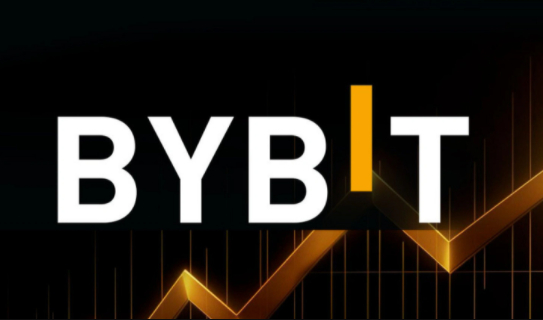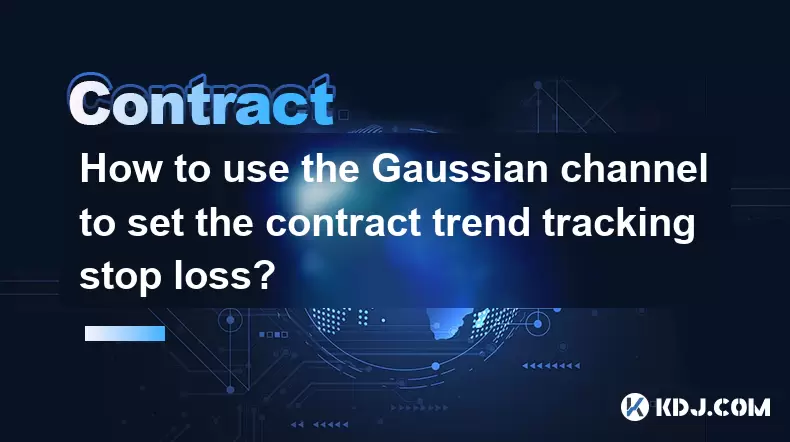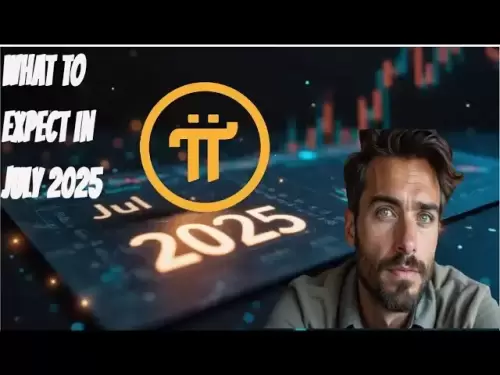-
 Bitcoin
Bitcoin $107,443.3008
-1.17% -
 Ethereum
Ethereum $2,494.2503
-0.63% -
 Tether USDt
Tether USDt $1.0003
0.00% -
 XRP
XRP $2.2496
2.23% -
 BNB
BNB $658.7569
0.63% -
 Solana
Solana $154.9826
1.94% -
 USDC
USDC $1.0000
0.01% -
 TRON
TRON $0.2799
1.07% -
 Dogecoin
Dogecoin $0.1659
-1.78% -
 Cardano
Cardano $0.5745
0.25% -
 Hyperliquid
Hyperliquid $39.7005
0.13% -
 Bitcoin Cash
Bitcoin Cash $519.5989
3.78% -
 Sui
Sui $2.7874
-2.40% -
 Chainlink
Chainlink $13.3762
-1.69% -
 UNUS SED LEO
UNUS SED LEO $9.0784
-0.64% -
 Avalanche
Avalanche $17.9846
-2.81% -
 Stellar
Stellar $0.2390
-0.06% -
 Toncoin
Toncoin $2.9028
0.25% -
 Shiba Inu
Shiba Inu $0.0...01147
-2.17% -
 Litecoin
Litecoin $86.6956
-1.27% -
 Hedera
Hedera $0.1508
-0.50% -
 Monero
Monero $322.6222
3.26% -
 Polkadot
Polkadot $3.4124
-2.99% -
 Dai
Dai $0.9999
0.00% -
 Bitget Token
Bitget Token $4.5434
-1.97% -
 Ethena USDe
Ethena USDe $1.0002
0.00% -
 Uniswap
Uniswap $7.1562
-2.61% -
 Aave
Aave $275.8830
-1.02% -
 Pepe
Pepe $0.0...09790
-4.04% -
 Pi
Pi $0.5018
-5.09%
Bybit contract stop loss and take profit settings
Traders can leverage Bybit's advanced settings for stop loss and take profit orders, including trailing stop, limit prices, and position closing options, to refine their risk management strategies and optimize trading outcomes.
Nov 21, 2024 at 05:31 am

Bybit Contract Stop Loss and Take Profit Settings
Introduction
Bybit, a leading cryptocurrency exchange, offers a range of powerful trading tools for its users, including advanced order types such as stop loss and take profit orders. These orders allow traders to automate their trading strategies, manage risk, and secure profits in volatile market conditions.
Understanding Stop Loss and Take Profit Orders
- Stop Loss Order: A stop loss order is an order that is triggered when the price of an asset falls below a predetermined level, known as the stop price. Once triggered, the order will sell the asset at the prevailing market price, limiting potential losses.
- Take Profit Order: A take profit order is an order that is triggered when the price of an asset rises above a predetermined level, known as the take profit price. Once triggered, the order will sell the asset at the prevailing market price, securing profits.
Configuring Stop Loss and Take Profit Orders on Bybit
To configure stop loss and take profit orders on Bybit, follow these steps:
- Open the Trading Interface: Navigate to the Bybit trading interface and select the desired trading pair.
- Place a Market Order: Place a market order to open a position.
- Click on the Stop Loss/Take Profit Tab: Locate the "Stop Loss/Take Profit" tab in the order placement panel.
- Enter Stop Loss and Take Profit Prices: Specify the stop loss price and take profit price.
Adjust Settings: Optionally, you can adjust the following settings:
- Order Type: Choose between a market order or limit order for execution.
- Trigger Type: Select "Mark Price" for real-time price execution or "Last Price" for historical price execution.
- Reduce Only: Enable this option to only reduce the position size instead of opening a new opposite position.
- Preview and Confirm: Review the order details and click on the "Place Order" button to confirm.
Advanced Settings for Stop Loss and Take Profit Orders
Bybit offers advanced settings for stop loss and take profit orders to enhance precision and control:
- Stop Loss Limit Price: Set a limit price for the stop loss order, ensuring that the asset is sold at a specific price even if the market price drops rapidly.
- Take Profit Limit Price: Set a limit price for the take profit order, guaranteeing that the asset is sold at a specific price even if the market price rises sharply.
- Trailing Stop: Enable trailing stop to automatically adjust the stop loss price as the asset's price moves in a favorable direction.
- Close Position: Optionally, you can configure the stop loss or take profit order to close the entire position or only a portion of it.
Benefits of Using Stop Loss and Take Profit Orders
- Risk Management: Stop loss orders limit potential losses by automatically exiting the trade when the market moves against you.
- Profit Securing: Take profit orders secure profits by automatically selling the asset when the desired profit target is reached.
- Automated Trading: Stop loss and take profit orders automate trading strategies, allowing traders to manage risk and secure profits even when away from the platform.
By effectively utilizing stop loss and take profit orders on Bybit, traders can enhance risk management, secure profits, and automate their trading to optimize results.
Disclaimer:info@kdj.com
The information provided is not trading advice. kdj.com does not assume any responsibility for any investments made based on the information provided in this article. Cryptocurrencies are highly volatile and it is highly recommended that you invest with caution after thorough research!
If you believe that the content used on this website infringes your copyright, please contact us immediately (info@kdj.com) and we will delete it promptly.
- Solana, Pepe Coin, Crypto Meme Mania: What's Hot and What's Not?
- 2025-07-01 19:10:12
- Bitcoin Cash Price Pump: Unpacking the Reasons Behind the Surge
- 2025-07-01 18:30:12
- Dogecoin's Wild Ride: Rally Potential Amidst Investor Panic?
- 2025-07-01 19:10:12
- Algorand, Wormhole, and Interoperability: A New Dawn for DeFi
- 2025-07-01 19:15:12
- CATL's Indonesian Battery Blitz: A 6 Billion Dollar Bet on the Future
- 2025-07-01 19:20:14
- Bitcoin, PEP-20, and the Token Standard Revolution: Is Bitcoin Pepe the Next Big Thing?
- 2025-07-01 18:30:12
Related knowledge

How to use the price slope to filter the false breakthrough signal of the contract?
Jun 20,2025 at 06:56pm
Understanding the Concept of Price Slope in Contract TradingIn contract trading, especially within cryptocurrency derivatives markets, price slope refers to the rate at which the price changes over a specific time period. It helps traders assess the strength and sustainability of a trend. A steep slope may indicate strong momentum, while a shallow slope...

How to determine the expected volatility of the contract through the volatility cone?
Jun 19,2025 at 12:28pm
Understanding the Basics of Volatility in Cryptocurrency ContractsIn the realm of cryptocurrency trading, volatility is a key metric that traders use to assess potential risk and reward. When dealing with futures contracts, understanding how volatile an asset might become over time is crucial for position sizing, risk management, and strategy developmen...

How to formulate a contract intraday trading plan in combination with the pivot point system?
Jun 21,2025 at 03:42pm
Understanding the Basics of Pivot Points in Cryptocurrency TradingPivot points are technical analysis tools used by traders to identify potential support and resistance levels. These levels are calculated using the previous day's high, low, and closing prices. In the context of cryptocurrency trading, where markets operate 24/7, pivot points help trader...

How to adjust the contract position ratio through the price fluctuation entropy?
Jun 22,2025 at 11:42am
Understanding Price Fluctuation Entropy in Cryptocurrency ContractsIn the world of cryptocurrency futures trading, price fluctuation entropy is a relatively new concept used to measure market volatility and uncertainty. It derives from information theory, where entropy refers to the degree of randomness or unpredictability in a system. In crypto contrac...

How to use the volume swing indicator to predict the contract volume-price divergence?
Jun 18,2025 at 11:42pm
Understanding the Volume Swing IndicatorThe volume swing indicator is a technical analysis tool used primarily in cryptocurrency trading to evaluate changes in volume over time. Unlike price-based indicators, this metric focuses solely on trading volume, which can provide early signals about potential market reversals or continuations. The key idea behi...

How to use the Gaussian channel to set the contract trend tracking stop loss?
Jun 18,2025 at 09:21pm
Understanding the Gaussian Channel in Cryptocurrency TradingThe Gaussian channel is a technical indicator used primarily in financial markets, including cryptocurrency trading, to identify trends and potential reversal points. It is based on statistical principles derived from the normal distribution, commonly known as the Gaussian distribution or bell ...

How to use the price slope to filter the false breakthrough signal of the contract?
Jun 20,2025 at 06:56pm
Understanding the Concept of Price Slope in Contract TradingIn contract trading, especially within cryptocurrency derivatives markets, price slope refers to the rate at which the price changes over a specific time period. It helps traders assess the strength and sustainability of a trend. A steep slope may indicate strong momentum, while a shallow slope...

How to determine the expected volatility of the contract through the volatility cone?
Jun 19,2025 at 12:28pm
Understanding the Basics of Volatility in Cryptocurrency ContractsIn the realm of cryptocurrency trading, volatility is a key metric that traders use to assess potential risk and reward. When dealing with futures contracts, understanding how volatile an asset might become over time is crucial for position sizing, risk management, and strategy developmen...

How to formulate a contract intraday trading plan in combination with the pivot point system?
Jun 21,2025 at 03:42pm
Understanding the Basics of Pivot Points in Cryptocurrency TradingPivot points are technical analysis tools used by traders to identify potential support and resistance levels. These levels are calculated using the previous day's high, low, and closing prices. In the context of cryptocurrency trading, where markets operate 24/7, pivot points help trader...

How to adjust the contract position ratio through the price fluctuation entropy?
Jun 22,2025 at 11:42am
Understanding Price Fluctuation Entropy in Cryptocurrency ContractsIn the world of cryptocurrency futures trading, price fluctuation entropy is a relatively new concept used to measure market volatility and uncertainty. It derives from information theory, where entropy refers to the degree of randomness or unpredictability in a system. In crypto contrac...

How to use the volume swing indicator to predict the contract volume-price divergence?
Jun 18,2025 at 11:42pm
Understanding the Volume Swing IndicatorThe volume swing indicator is a technical analysis tool used primarily in cryptocurrency trading to evaluate changes in volume over time. Unlike price-based indicators, this metric focuses solely on trading volume, which can provide early signals about potential market reversals or continuations. The key idea behi...

How to use the Gaussian channel to set the contract trend tracking stop loss?
Jun 18,2025 at 09:21pm
Understanding the Gaussian Channel in Cryptocurrency TradingThe Gaussian channel is a technical indicator used primarily in financial markets, including cryptocurrency trading, to identify trends and potential reversal points. It is based on statistical principles derived from the normal distribution, commonly known as the Gaussian distribution or bell ...
See all articles

























































































